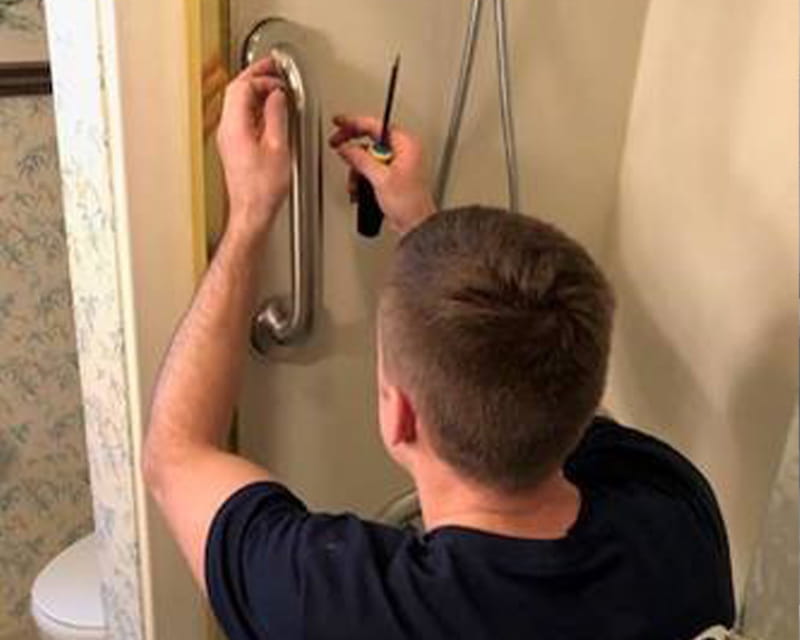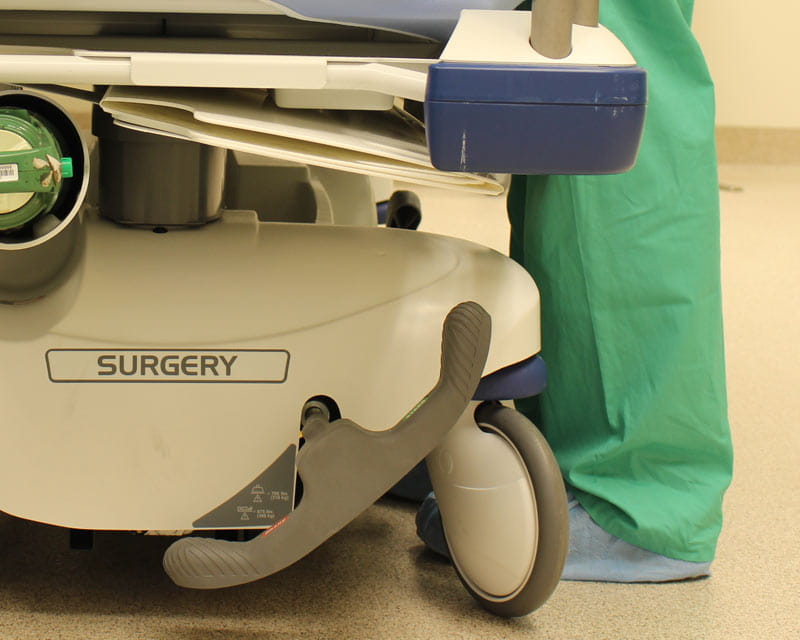
improving patient care
 When it comes to operating room safety, sterile tools and handwashing protocols are some of the first steps that come to mind. But operating room traffic and door openings also play a major role in air contamination and can increase infection risk for patients.
When it comes to operating room safety, sterile tools and handwashing protocols are some of the first steps that come to mind. But operating room traffic and door openings also play a major role in air contamination and can increase infection risk for patients.
With that in mind, Carmen Quatman, MD, PhD, an orthopedic surgeon at Ohio State University Wexner Medical Center, has led research that looks into door openings within orthopedic trauma and arthroplasty operations. The research, which started in 2015, has led to additional safety education and intervention, as well as the development of a door sensor that tracks openings during surgery.
“Operating rooms are very much a sterile environment, but every time the door opens, there is a risk for cellular debris to enter the operating room,” Dr. Quatman says.
Door openings can also affect the operating room’s positive pressure, which protects patients and helps keep supplies sterile.
Dr. Quatman’s team began collecting baseline data on the trauma and arthroplasty surgeries in June 2015. The research involved using a human monitor to record the door openings.
Room traffic in orthopedic surgeries is often caused by the need for special medications and blood products, staffing changes or delivering equipment. During the data collection, door openings were recorded when someone walked through the door or opened the door to pass information. This tracking allowed the team to look at ways to optimize workflow and reduce overall traffic.
After three months of data collection, the team recorded door opening data on 35 surgeries and found that there was an average of 124.3 door openings per surgery, or an average 0.58 door openings per minute.
Once Dr. Quatman’s team completed the initial data collection in August 2015, they created stakeholder committees that could digest and discuss the data as well as propose ideas for reducing operating room traffic.
“We established it as an idea of a system-wide opportunity, so we weren’t pinpointing one specific team,” Dr. Quatman says. “Everyone provided feedback and was engaged with the goal of reducing traffic and increasing safety.”
As a result, the team created a practice guideline that included:
Placing signs on the doors to remind people to only open the door if necessary
After rolling out the educational components, Dr. Quatman’s team collected door open data again from June 2016 to August 2016, recording information for 42 surgery cases. They found an average 30% decrease in door openings per minute.
While the data showed that they were able to reduce operating room traffic, Dr. Quatman says the traffic started to slowly increase over time. In other words, the more time that elapsed from the initial education, the more the door openings crept up toward pre-intervention numbers. Keeping that in mind, Dr. Quatman says it’s important that they continue education to ensure staff keeps operating room traffic top of mind.
Although having a monitor in the room to record door openings is the conventional way of collecting data, Dr. Quatman says it can have an influence on the operating room staff’s behavior, as they know they are being tracked. It’s also time consuming and requires someone to spend eight to 10 hours a day collecting data.
Since a human monitor is not sustainable, Dr. Quatman has worked with Ajit Chaudhari, PhD, an Ohio State engineer to develop a sensor that tracks door openings in the operating room. The sensor can give real-time feedback to surgery teams who can view the door open rates and time on a monitor.
The surgical teams can set a threshold for door open rates that they would like to stay within during a case, and the monitor will change color (from green to red) as the team gets closer to that threshold.
To help track operating room traffic over time, the sensor data is also recorded to cloud storage so it can be evaluated more in-depth, which can help inform future interventions and education for operating room teams.
“Continuous feedback is important for sustainability of this safety initiative,” Dr. Quatman says.
While the sensor was initially rolled out in orthopedic surgeries, Dr. Quatman says they have passed the technology onto Ohio State’s heart surgery teams as well.